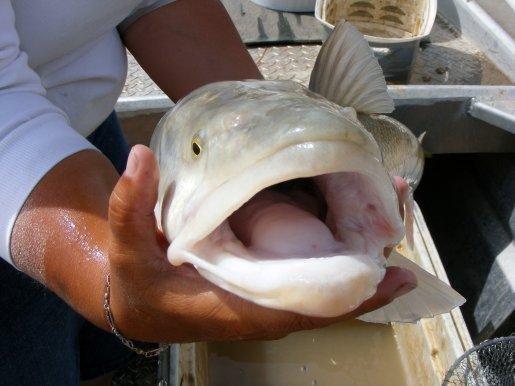(WASHINGTON, D.C.) – The National Fish Habitat Action Plan has unveiled the 2011 10 “Waters to Watch” list, a collection of rivers, streams, estuaries, watershed systems and shores that will benefit from strategic conservation efforts to protect, restore or enhance their current condition.
In Utah, the Duchesne River has been selected as one of the 10 “Waters to Watch” for 2011.
The 10 waters represent a snapshot of this year’s larger voluntary habitat conservation efforts in progress. These and other locally driven conservation projects are prioritized and implemented by regional Fish Habitat Partnerships that have formed throughout the country to implement the National Fish Habitat Action Plan. The objective of the Action Plan is to conserve freshwater, estuarine and marine habitats essential to the many fish and wildlife species that call these areas home.
Duchesne River
The Duchesne River is a major tributary of the Green River in northeastern Utah. It once provided seasonal habitat for Colorado pikeminnow and year-round habitat for flannelmouth sucker, bluehead sucker, and roundtail chub.
However, because of the construction of water diversion structures and dams, and increased numbers of nonnative fish, habitat value and availability for native fishes have diminished. Recent studies have indicated that native fish, including species of concern such as flannelmouth sucker, bluehead sucker, and roundtail chub, have become increasingly rare below the diversion.
The Myton Diversion, located approximately 43 river miles above the confluence with the Green River, does not currently allow fish to move from the lower reaches of the Duchesne River into the upper reaches of the Duchesne River. A fish passage structure will restore connectivity between fish populations above and below the diversion, which will restore gene flow and migratory capabilities of the species and increase the amount of habitat and the ability to select better habitat of each individual.
The Myton Diversion Fish Passage project is expected to restore connectivity to populations of flannelmouth sucker, bluehead sucker, and roundtail chub existing above and below the diversion and to allow movement upstream of Colorado pikeminnow. The Desert Fish Habitat Partnership (DFHP) is providing financial assistance because the project supports the DFHP’s purpose which is, “to conserve aquatic habitat in the arid West for desert fishes…by protecting, restoring, and enhancing these unique habitats…” The Myton Diversion Fish Passage project is anticipated to be completed by 2012.
Project partners include the U.S. Fish and Wildlife Service, the Northern Ute Indian Tribe, the Utah Division of Wildlife Resources and the Utah Ecological Service Field Office.
10 Waters to Watch list
The 10 “Waters to Watch” are representative of freshwater to marine habitats across the country including rivers, lakes, reservoirs and estuaries that benefit through the conservation efforts of these Fish Habitat Partnerships formed under the Action Plan-a bold initiative implemented in 2006 to avoid and reverse persistent declines in our nation’s aquatic habitats.
The initial Action Plan’s 10 “Waters to Watch” list was unveiled in 2007 and in 2011 will feature its 50th project. Since 2006, the U.S. Fish and Wildlife Service has provided $12 million to support 257
on-the-ground Action Plan projects in 43 states, leveraging $30 million in partner match, to address the priorities of Action Plan Fish Habitat Partnerships. Additional funds have been provided by several other State and Federal agencies and Non- Governmental Organizations (NGOs) and industry partners.
“Our approach-teaming local, state, tribal, and federal agencies with private partners and stakeholders-is helping to bring these waters back to life in most cases…in a faster more strategic way,” said Kelly
Hepler, Chairman of the National Fish Habitat Board. “By watching these 10 models of our nation’s aquatic conservation efforts underway, we can see real progress, in both avoidance and treatment of causes of fish habitat decline. Too often we have focused on treatment of symptoms with limited success. Through sound science and on-the-ground locally driven partnerships, these select Action Plan projects can be held high as a vision of what quality habitat should and can be, and how it benefits all people throughout the United States.”


